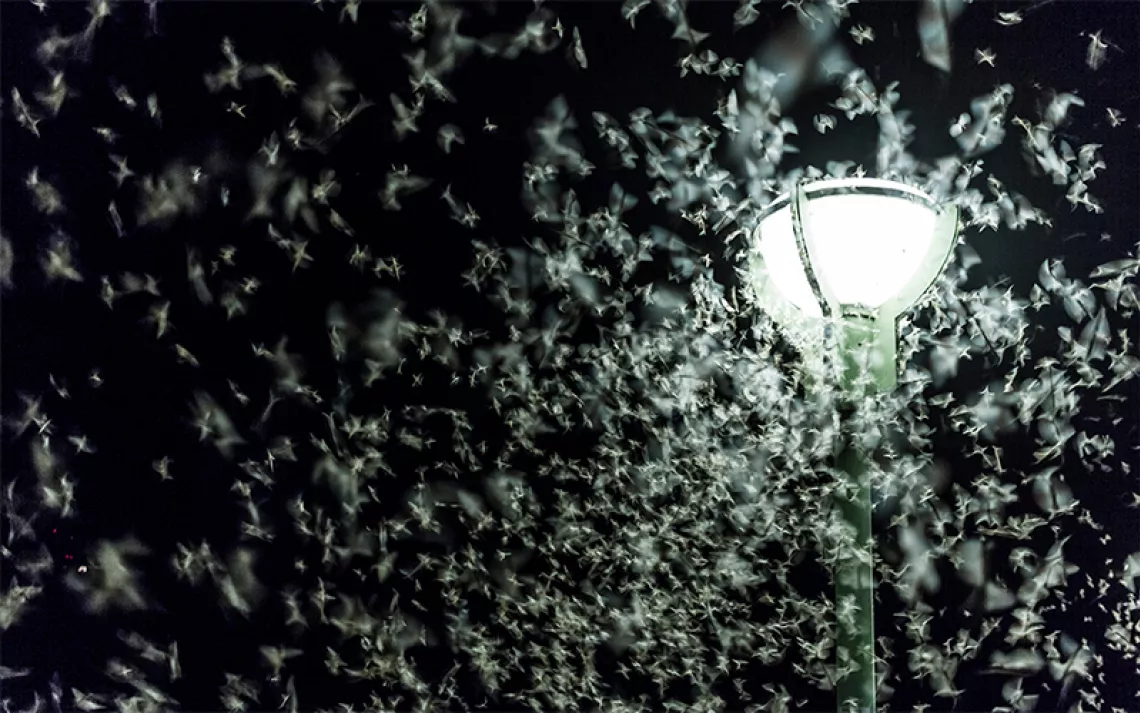City Lights are Death Traps for Moths
Light pollution may snuff them out

Hyalophora cecropia, the giant silk moth, is North America's largest. | Photo by Todd Pusser
Moths are annoying. They fly into lanterns and campfires and porch lights with crazed abandon. Their dusty bodies pile up on windowsills and windshields. The gypsy moth plagues the farmyard, and clothes moth larvae nibble our sweaters. Hate them if you will, but remember that moths like the giant silk moth above (along with other insects) pollinate 80 percent of our food crops. In turn, their bodies sustain countless birds, rodents, and bats. Entire ecosystems rest on their powdery, delicate wings.

Sign up to receive Sierra News & Views
Get articles like this one sent directly to your inbox weekly.
With this action you affirm you want to receive Sierra Club communications and may vote on policy designated by the Sierra Club Board.
Moths lead simple lives. They don't even eat—many species do not have mouths. Their only goal is to reproduce, guided to suitable nesting grounds by the shadow of the moon. But cities now glow brighter than a full moon, and the ambient light pollution radiating from urban areas draws moths to their deaths. Moths are blinded under street lamps, and their lacy camouflage is useless against concrete and glass, so streetlights become all-night buffets for bats and other nocturnal predators.
Only two species of moths are protected under the Endangered Species Act, but three have gone extinct in the past decade. Many populations are seeing declines of up to 99 percent. Between monoculture crops, pesticides, changing climate, urbanization, and decreasing darkness, the future of night-flying moths is dim.
There is a bright side. The International Dark-Sky Association (IDA) encourages cities to install motion-sensitive dimming streetlights and is working to designate dark-sky parks that could provide a refuge for nocturnal species. "It's down to the level of the individual," says IDA program manager John Barentine. "Every time a person shields a porch light on their house, they're helping."
 The Magazine of The Sierra Club
The Magazine of The Sierra Club



